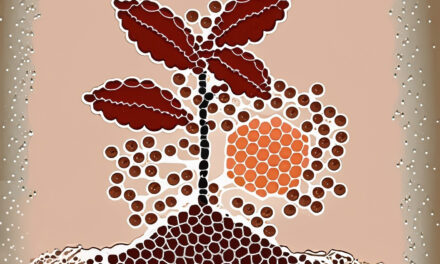Coffee, a daily ritual for many and a beverage that brings people together, is a product of a fascinating journey that transforms the humble coffee cherry into the aromatic beans we know and love. This journey is marked by several stages, each contributing to the unique characteristics of the coffee. One of the most significant stages is coffee processing. This article aims to provide a comprehensive guide to the various coffee processing methods, serving as a foundation for understanding the complex world of coffee.
Anatomy of a Coffee Cherry: The Starting Point of Our Journey
Before we delve into the intricate world of coffee processing, it’s essential to understand the basic structure of a coffee cherry, the fruit from which coffee beans are derived. A coffee cherry typically consists of:
- Outer skin (Exocarp): The outermost layer of the cherry, usually red or yellow when ripe.
- Pulp (Mesocarp): The thick, sweet layer beneath the skin.
- Mucilage (Parenchyma): A slimy, sugary layer that surrounds the parchment.
- Parchment (Endocarp): A hard, protective layer that encloses the coffee beans.
- Silver skin (Episperm): A thin layer that covers the coffee beans.
- Coffee Beans (Endosperm): The innermost part of the cherry, which is processed and roasted to make coffee.
Each of these layers plays a role in the coffee processing journey, shaping the beans that eventually make their way to your cup.
General Stages in Post-Harvest Processing: The Transformation of Coffee Cherries
Coffee Processing essentially is a technique of extracting the coffee beans out of the coffee cherry. Although there are myriad of methods involves, here are several stages that are commonly found in coffee processing: depulping, fermentation, drying, and hulling. Not all stages are utilized in every processing method (and it doesn’t have to follow this order), but each stage is crucial in transforming the coffee cherries.
- Depulping: Depulping is the removal process of the outer skin and pulp of the cherries. This can be done using a machine or by hand.
- Fermentation: Fermentation is traditionally done to remove the sticky mucilage layers; but contemporarily, this stage is also conducted to create unique flavor profile in coffee. Fermentation can occur naturally, or it can be induced under controlled conditions.
- Drying: Drying is a method to reduce the moisture content of the beans. This can be done naturally under the sun or using mechanical dryers.
- Hulling: Hulling is the removal of the parchment layer (endocarp) around the dried coffee bean. This process is generally the final step before the beans are ready for sortation and then roasting.
As the writing of this article, there is no consensus on classifying coffee processing methods. In this article, we are classifying based into three general categories:
- The state of the beans during the drying phase,
- The uses special fermentation techniques, or
- Miscellaneous processes that don’t fall into either category.
With this understanding in-mind, let’s delve deeper into the various coffee processing methods that occur after the coffee cherries are harvested.
Processing Methods Based on the State of the Coffee Beans during the Drying Phase
These processing methods are among the most common (if not the most common) practices used to extract the coffee beans out of the coffee cherry:
- Natural/Dry Process.
The natural or dry process involves drying the coffee cherries in their entirety. This method imparts a fruity, wine-like flavor to the coffee. - Full Wash/Wet Process.
The washed or wet process involves drying in the form of beans, stripping all fruit elements. This method often results in a cleaner taste with pronounced acidity. - Pulped Natural/Honey Process.
The pulped natural or honey process is a hybrid method where the outer skin is removed, but some or all of the mucilage is left on the beans during drying. This method can result in a wide range of flavors depending on the amount of mucilage left on the beans. - Wet-Hulled Process.
The wet-hulled process, also known as Giling Basah, is a method commonly used in Indonesia. It involves removing the outer layers of the cherry and partially drying the beans before removing the parchment. The beans are then dried again, resulting in a distinctive, earthy flavor.
Coffee Processing Methods Involving Special Fermentation Techniques
Fermentation is a natural process that plays a significant role in coffee processing. It involves the breakdown of sugars by yeast or bacteria. The fermentation process in coffee can significantly alter the flavor profile of the beans, leading to a variety of unique and complex flavors. Here are some coffee processing methods that are gaining popularity through the unique flavor profile produced by its special fermentation techniques:
- Anaerobic Fermentation.
Anaerobic fermentation involves fermenting the coffee cherries or beans in a sealed, oxygen-free environment. Variations of this method include carbonic maceration, where the cherries are fermented in a carbon dioxide-rich environment, and lactic acid fermentation, where lactic acid bacteria are used to ferment the beans. - Yeast Fermentation.
The washed or wet process involves drying in the form of beans, stripping all fruit elements. This method often results in a cleaner taste with pronounced acidity.
Other Processing Methods
In addition to the traditional methods, there are several other processing techniques that coffee producers around the world use to create unique flavor profiles and improve the quality of their beans
- Wine Process
The wine process is a method that involves extended fermentation times, similar to the process of making wine. This method results in coffee with a unique, wine-like flavor profile. - Monsooned Coffee
Monsooned coffee is a unique processing method used primarily in India. After the traditional processing methods are complete, the green coffee beans are exposed to monsoon winds in open warehouses for several weeks. This process increases the body and reduces the acidity of the coffee, resulting in a unique flavor profile. - Civet Coffee (Kopi Luwak)
This coffee is the digestive left-over of coffee cherries consumed by a civet (Luwak). The processing occurs naturally within the civet’s body, producing a flavor profile that tends to be unique and varied (depending on the type of civet and the type of coffee consumed). This coffee, which was once the most expensive in the world, has also sparked polarization of opinions: while many people enjoy it, many others dislike it. What do you think about this coffee?
Conclusion
Post-harvest coffee processing plays a pivotal role in defining the flavor of the coffee, while also offering boundless opportunities for innovation and experimentation. Gaining an understanding of these processing methods can not only deepen your appreciation for the complexity and craftsmanship that goes into each cup of coffee but also assist you in making informed decisions when purchasing coffee that aligns with your taste preferences. I hope this article serves as a robust foundation for your exploration of coffee processing. Stay tuned for more in-depth articles on each processing method, where we’ll delve into the specifics and explore the unique flavors they contribute to your coffee experience.





